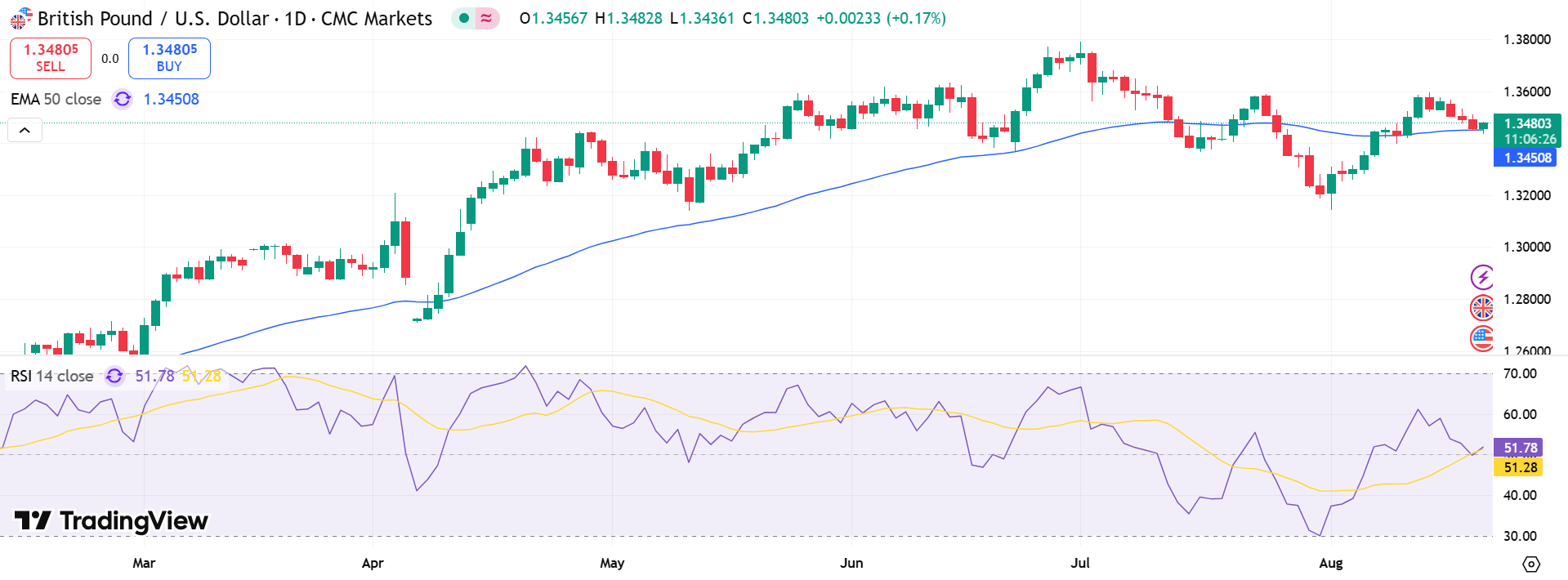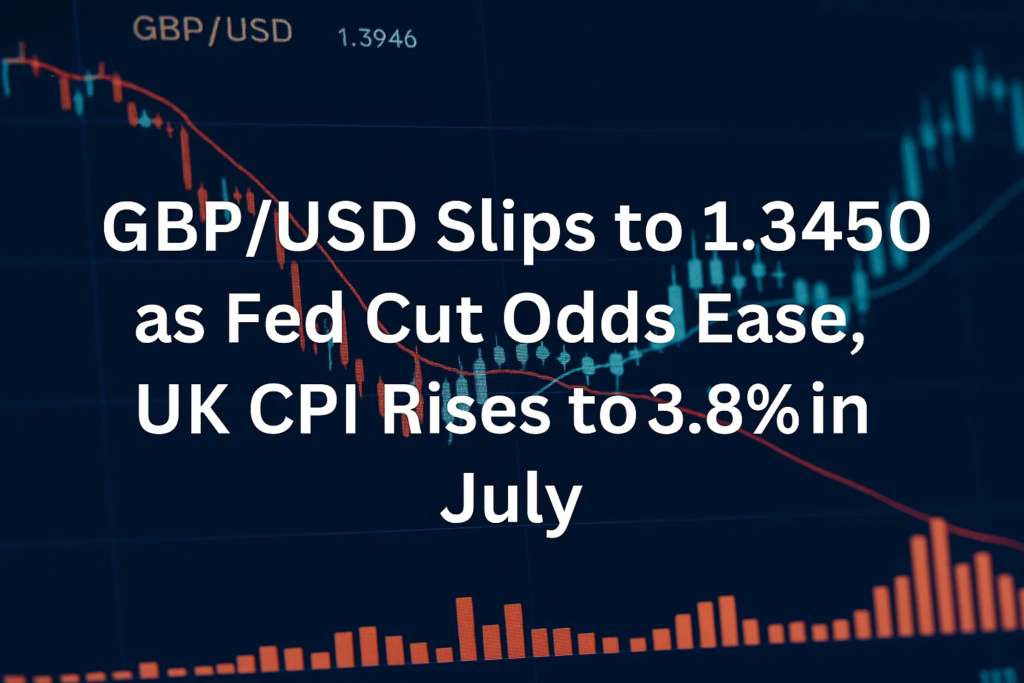The British pound drifted lower against the U.S. dollar on Thursday, with GBP/USD trading near 1.3450 in early European hours. The modest rebound in the dollar came as investors recalibrated expectations for U.S. monetary policy, awaiting fresh economic signals.
The focus now turns to the S&P Global Purchasing Managers’ Index (PMI) surveys from both the U.K. and U.S., due later in the day. These data points are expected to provide a clearer view of near-term growth momentum.
On the technical front, momentum indicators highlight a lack of buying pressure. The Relative Strength Index (RSI) on the 4-hour chart remains below 50, signaling subdued demand for the pound.
Key levels for traders include:
- Support: 1.3460 (Fibonacci 50% retracement, 200-period SMA), 1.3410–1.3400, 1.3330.
- Resistance: 1.3500 (50-day SMA), 1.3540, and 1.3590–1.3600.
Fed Outlook Strengthens USD
The greenback gained traction after stronger U.S. wholesale price data dampened expectations for aggressive Fed easing. According to the CME FedWatch Tool, markets now assign a nearly 80% chance of a September rate cut, with a total of 52 basis points of easing priced in for the remainder of 2025.
Still, caution dominates ahead of Fed Chair Jerome Powell’s speech at Jackson Hole on Friday. A hawkish tone or calls for patience could reinforce dollar strength and weigh further on GBP/USD.
Recent Wall Street sentiment has leaned toward the Fed prioritizing inflation stability, even if it means tolerating a cooling labor market. That stance has limited speculation of rapid cuts, pushing investors toward safer dollar assets.
UK Inflation Slows but Stays Hot
Meanwhile, U.K. data released Wednesday showed inflation holding uncomfortably high. The Consumer Price Index (CPI) rose 3.8% year-on-year in July, up from 3.6% in June and above consensus forecasts of 3.7%. Core CPI, which strips out food and energy, also climbed 3.8% YoY, exceeding expectations.

However, monthly price growth cooled to 0.1% in July, from 0.3% in June, suggesting some easing pressures.
The latest figures have tempered expectations for an imminent Bank of England (BoE) rate cut. Markets now see the next quarter-point reduction as unlikely before March 2026, compared to earlier forecasts of late 2025. This repricing could lend the pound some medium-term support, even as near-term pressures remain tilted to the downside.


